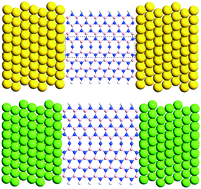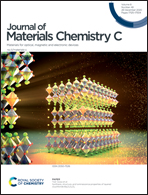Excellent charge and spin transport in insulating hexagonal boron nitride with one-dimensional electron channel
Abstract
The application prospects of hexagonal boron nitride (hBN) with its wide bandgap are generally considered to be limited in the field of electronics. However, a recent experiment opens up the opportunity to design single-hBN electronic devices, where atomically sharp AA′/AB stacking boundaries of few-layered hBN that can be regarded as a one-dimensional electron channel have been found (H. J. Park, J. Cha, M. Choi, J. H. Kim, R. Y. Tay, E. H. T. Teo, N. Park, S. Hong and Z. Lee, Sci. Adv., 2020, 6, eaay4958). As hBN with a one-dimensional electron channel may realize applications in integrated functional electronic devices, it is very important and timely to investigate its transport behaviors. Here we investigate the electron transport properties of hBN with a one-dimensional electron channel connected to two different types of metal electrodes, using nonequilibrium Green's functions in combination with density functional theory. Various transport properties are observed, including varistor-type behavior, nearly perfect spin polarization, and large magnetoresistance. These results indicate that hBN with a one-dimensional electron channel has profound potential for developing overcurrent protection devices, and spin logic and memory devices. As electronic cross-talk is a major obstacle hindering the development of next-generation high-performance electronic circuits, integrated circuits based on insulating hBN with a one-dimensional electron channel hold great promise in solving this problem.



 Please wait while we load your content...
Please wait while we load your content...